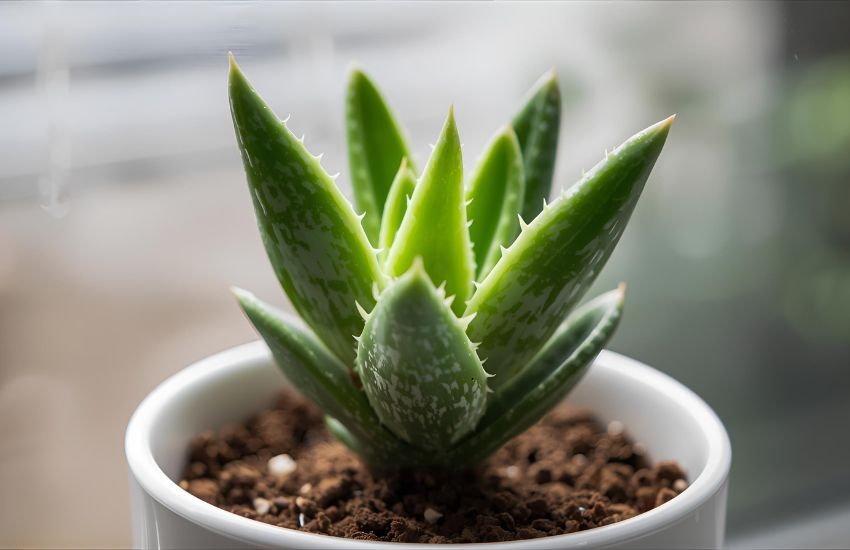If you’re seeking a resilient succulent that thrives with minimal fuss and adds a touch of green tranquility to your indoor space, the Haworthia turgida var. suberecta is an excellent choice. This compact houseplant, known by its common name as a type of Haworthia, forms a charming rosette of pointed, translucent leaves that seem to glow under partial sun. It’s a drought-tolerant variety that naturally grows in clusters or a clump, making it perfect for a decorative pot on your desk or windowsill.
You’ll appreciate how this genus of plants adapts to your home environment when provided with well-draining soil, proper drainage, and occasional water. During its dormant period, the plant slows its growth, requiring only minimal care to maintain its natural beauty. With the right balance of moisture and light, it can produce offsets, creating a lush miniature colony over time.
In this guide, you’ll discover everything you need to cultivate healthy indoor growth—from soil composition and hardiness zone preferences to hardiness traits and propagation through offsets. Let’s explore how to help your Haworthia turgida var. suberecta thrive effortlessly in your modern space.
Effective Propagation Methods to Grow a Thriving Haworthia Turgida Collection

Growing your own Haworthia turgida collection is both rewarding and surprisingly simple. Often called the windowpane plant, this green succulent is native to the rocky cliff regions of the Cape Province in South Africa, where it naturally multiplies under full to partial sun. Indoors, its light green rosettes form a compact cluster, making it a favorite among every beginner and experienced grower alike. With proper propagation techniques, you can easily expand your collection and help each plant thrive in your indoor garden.
Leaf and Offset Propagation for Beginners
The most common propagation method is through offsets—small shoots that appear around the parent plant. Once these are large enough to handle, gently remove them and allow the cut ends to dry for a day before replanting. Use a gritty mixture containing perlite, pumice, and coarse sand to ensure proper drainage. This setup prevents rot and allows roots to establish quickly. For the best results, propagate during the warm months when growth is active.
Preparing the Ideal Indoor Environment
To help your new plants thrive, place them in a space with bright, indirect indoor light and limited sun exposure. Unlike cactus species that tolerate harsh sunlight, Haworthias prefer gentle rays. If you grow them indoors, ensure they receive at least 4–6 hours of filtered light daily. Maintain a warm environment consistent with USDA hardiness zones 9–11.
Repotting and Care for Healthy Growth
Once offsets root firmly, you may repot them into a shallow pot filled with fresh, nutrient-rich soil. Avoid overwatering, as these succulents store moisture in their green leaves. Feed sparingly with a diluted fertilizer once or twice a year to maintain healthy foliage. You may also fertilize using an organic blend recommended by trusted sources such as Mountain Crest Gardens, ensuring your plants continue to thrive throughout the seasons.
Pest Prevention and Long-Term Success
Although relatively hardy, the windowpane plant can occasionally attract pests such as mealybugs or aphids. Keeping the soil airy with pumice and maintaining proper airflow indoors minimizes such issues. Consistent attention and gentle care help each indoor Haworthia turgida flourish into a robust and sustainable collection—an elegant nod to its natural origins along the cliffs of South Africa.
Conclusion
Caring for Haworthia turgida is a gratifying experience, especially when you understand its natural rhythm and environmental preferences. Native to South Africa, particularly the Western Cape Province, this hardy succulent reflects the resilience of plants that flourish among rocky limestone and slate cliffs. The fleshy, green to yellowish-green leaves, adorned with delicate leaf windows, absorb soft indirect light, creating a radiant display without the risks of direct sunlight.
Because Haworthia turgida grows in dry regions, it should be watered sparingly to prevent overwatering. Allow roots or cuttings to callus before planting, and use potting soil blended with mineral grit or vermiculite for excellent aeration. Remember, this species grows slowly, so patience and consistency are key. During the peak of summer, reduce waterings, as the plant may rest to preserve energy—unlike other succulents that demand more frequent care.
Thriving best in USDA hardiness zones 9–11, this compact plant can adapt to colder climates indoors when given proper warmth and lighting. Bring home this low-maintenance treasure today and let its enduring charm elevate your living space—start your own Haworthia turgida collection and experience the calm beauty of sustainable indoor gardening.
Frequently Asked Questions (Haworthia Turgida Plant Care Guide for Var. Suberecta Indoor Growth)
How do you care for haworthia Turgida?
Haworthia turgida requires bright, indirect sunlight and well-draining soil to thrive. Water moderately, allowing the soil to dry out between waterings. Avoid overwatering to prevent root rot. Keep it in temperatures between 18–27°C and fertilize lightly during the growing season for healthy, compact rosette growth.
How to take care of Haworthia indoors?
To care for Haworthia indoors, place it in bright, indirect sunlight and use well-draining cactus soil. Water only when the top inch of soil feels dry, avoiding waterlogging. Maintain moderate room temperatures between 18–27°C and low humidity. Fertilize lightly once a month during spring and summer.
How do you care for haworthia truncata?
Haworthia truncata thrives in bright, indirect light and well-draining cactus soil. Water sparingly, allowing the soil to dry completely between waterings. Keep it in moderate temperatures (18–27°C) and avoid overwatering. Fertilize lightly during the growing season. Repot every 2–3 years to maintain healthy root growth.
Can Haworthia grow in full sun?
Haworthia prefers bright, indirect sunlight rather than full sun. Direct sunlight, especially during hot afternoons, can scorch its leaves and cause discoloration. It grows best in filtered light or partial shade. If placed outdoors, provide protection from harsh sunlight to keep the plant healthy and vibrant.
